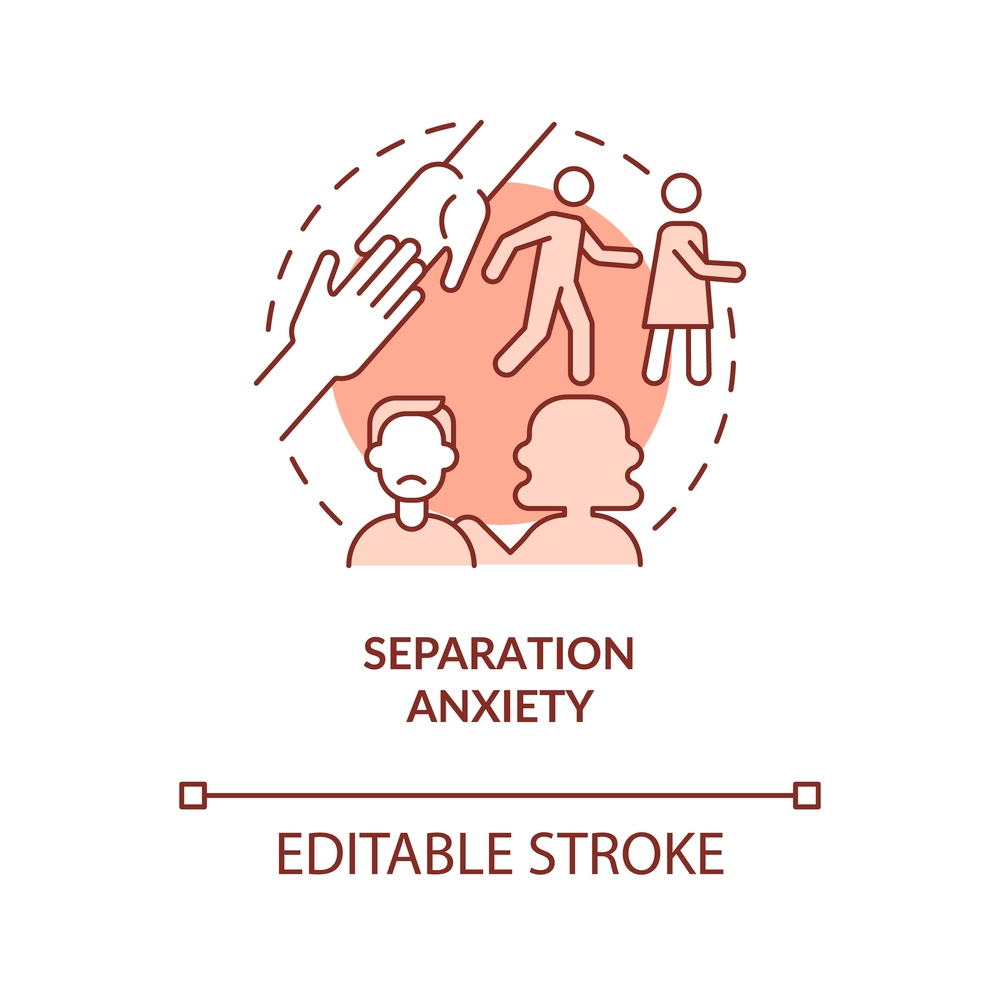
Separation Anxiety Disorder: Healing The Stranded Fear
Specific data on the prevalence of Separation Anxiety Disorder (SAD) alone is limited, some studies suggest that it is one of the most prevalent anxiety disorders in children, affecting approximately 4-5% of children and teenagers. In adults, the prevalence of SAD is estimated to be around 1-2%.
Separation anxiety disorder is one of the most prevalent mental health conditions worldwide, according to the World Health Organization (WHO), impacting approximately 264 million individuals worldwide. Estimates of the number of people suffering from separation anxiety disorder (SAD) worldwide are still quite uncertain, as many cases go undiagnosed or untreated.
What Is Separation Anxiety Disorder?
When confronted with an actual or anticipated separation from someone or something that offers a feeling of security or connection, separation anxiety disorder (SAD) is a type of mental health condition defined by excessive and persistent fear or anxiety.
People with SAD may experience intense distress, worry, and fear about being separated from their primary caregiver, a spouse or partner, or even their home or familiar environment. This fear can lead to significant distress and impairment in various areas of life, including school, work, social relationships, and daily functioning.
Separation Anxiety Disorder Symptoms
- Excessive worry or fear: People with SAD tend to experience intense and persistent worry or fear about getting separated from their attached figure(s) or familiar environment even for brief periods. This fear may be unrealistic or disproportionate to the actual situation. People also avoid being alone or going to places without their attached figures.
- Physical symptoms: SAD can also exhibit physical symptoms, such as headaches, stomachaches, nausea, vomiting, and muscle tension.
- Sleep difficulties
- Reluctance to be alone
- Unable to concentrate in school or work
- Panic attacks
- Frequent nightmares
Separation Anxiety Disorder In Children
Separation anxiety disorder (SAD) in children can have a significant impact on their daily life, including their emotional well-being, social growth, and academic performance.
Children with SAD may have a tough time separating from their main caregiver, even for short periods, such as going to school or attending playdates. They may feel extreme distress and fear of being separated from their loved ones, which can lead to school refusal, avoidance of social situations, and difficulties in forming new relationships.
SAD can also show up in physical symptoms, such as stomachaches, headaches, vomiting, and fatigue. These symptoms can further aggravate a child’s anxiety and make it challenging to attend a school or participate in other activities.
Children with SAD may also face trouble sleeping alone and may need their caretaker or have them close by to fall asleep. This can result in sleep disturbances and drowsiness throughout the day, which can affect their ability to concentrate and learn at school.
Separation Anxiety In Adults
When an adult has a separation anxiety disorder (SAD), they experience intense and enduring fear or anxiety when separated or anticipating separation from their attachment figure(s) or familiar surrounding. This fear can be so overpowering that it causes significant distress and impairment in different aspects of their life.
One of the primary ways that SAD can affect an adult’s life is through their relationships. Adults with Separation anxiety may struggle to form and maintain close relationships with others. They may be overly dependent on their attachment figure(s) and have difficulty tolerating even short periods of separation. This can lead to feelings of isolation and loneliness, as well as difficulty with interpersonal communication and intimacy.
SAD can also affect an adult’s ability to work or attend school. They may have difficulty concentrating or performing their office duties when their attachment figure(s) is not present. They may also have a fear of leaving home or going to new places, which can limit their job or academic opportunities. This can cause significant distress and frustration, as well as financial difficulties if they are unable to work or attend school regularly.
In addition to work and school, SAD can also affect an adult’s social life. They may begin to avoid social situations or struggle to make new friends. They may feel uncomfortable attending parties or social events without their attachment figure(s), leading to feelings of social isolation and loneliness.
SAD can make people more susceptible to developing other mental health problems like depression and other anxiety disorders. SAD can greatly lower an adult’s quality of life and cause other issues if ignored. If you or someone you know is exhibiting signs of SAD, you must seek expert assistance to ensure an accurate diagnosis and appropriate treatment. With the right treatment, SAD symptoms can be controlled for a better quality of life.
Causes Of Separation Anxiety Disorder
- Genetics: There is evidence that suggests genetic factors play a big role in the development of SAD in an individual. Children who have a family history of anxiety disorders are more likely to develop SAD.
- Brain chemistry: Abnormalities in certain brain chemicals, such as serotonin and dopamine, can also contribute to the development of anxiety disorders like separation anxiety disorders.
- Environmental factors: Trauma, and stressful life events brought on to one’s life can have detrimental changes, even changes like moving to a new house or school can trigger SAD in susceptible individuals.
- Parenting style: Overprotective parenting, lack of parental warmth or neglect, and insecure attachment in childhood have been associated with an increased risk of SAD.
- Temperament: Children who are naturally shy, sensitive, or timid may be more likely to develop SAD.
Separation Anxiety Disorder Treatment
Several strategies can help control symptoms and enhance the general quality of life if you or a loved one has a separation anxiety disorder. These include:
- Therapy: Cognitive-behavioral therapy (CBT) is an effective treatment for SAD. CBT can help patients identify and fight detrimental thought patterns and develop coping skills to manage anxiety symptoms.
- Medication: Antidepressants and anti-anxiety medications are prescribed by mental health experts to help manage symptoms of SAD. It is important to work closely with a healthcare provider to find the right medication and dosage for each individual.
- Lifestyle changes: Regular exercise, a healthy diet, and good sleep hygiene can help improve overall mental health and reduce anxiety symptoms.
- Gradual exposure: Gently exposing patients to separation triggers under a mental health professional’s supervision can help desensitize the fear response and build confidence in managing anxiety symptoms.
- Relaxation techniques: Mindfulness, deep breathing exercises, and progressive muscle relaxation can be beneficial in reducing anxiety symptoms and promoting relaxation.
- Support from loved ones: Having a supportive network of family and friends can help reduce feelings of loneliness and provide emotional support during stressful moments.
Seeking help for separation anxiety disorder is a brave and important step towards managing symptoms and improving overall well-being. Overcoming separation anxiety disorder may be a long process that takes time and effort but with the right treatment and support, it is possible to beat separation anxiety disorder and lead a happy and fulfilling life.
Consult a mental health specialist for your first step to recovery.








